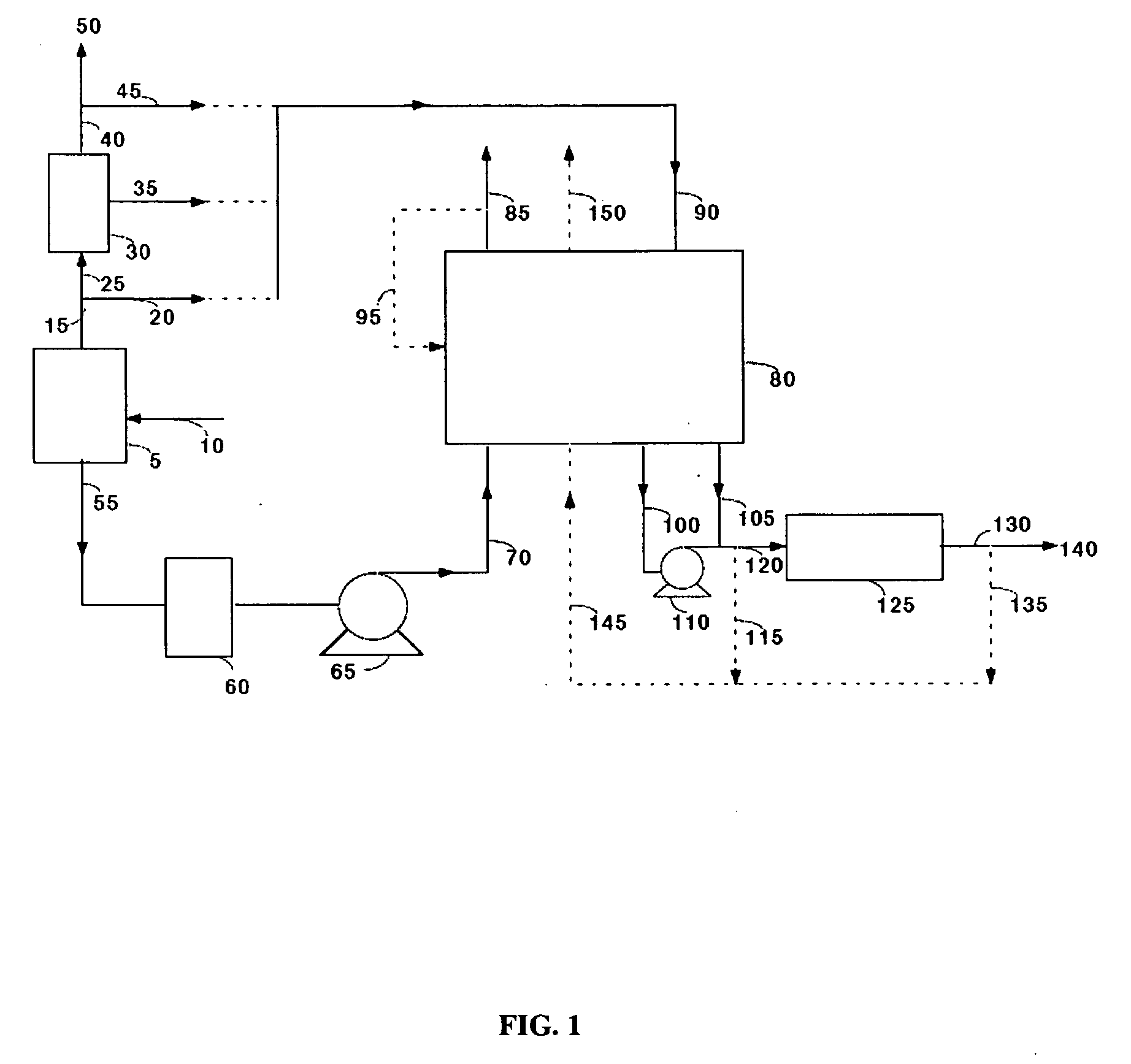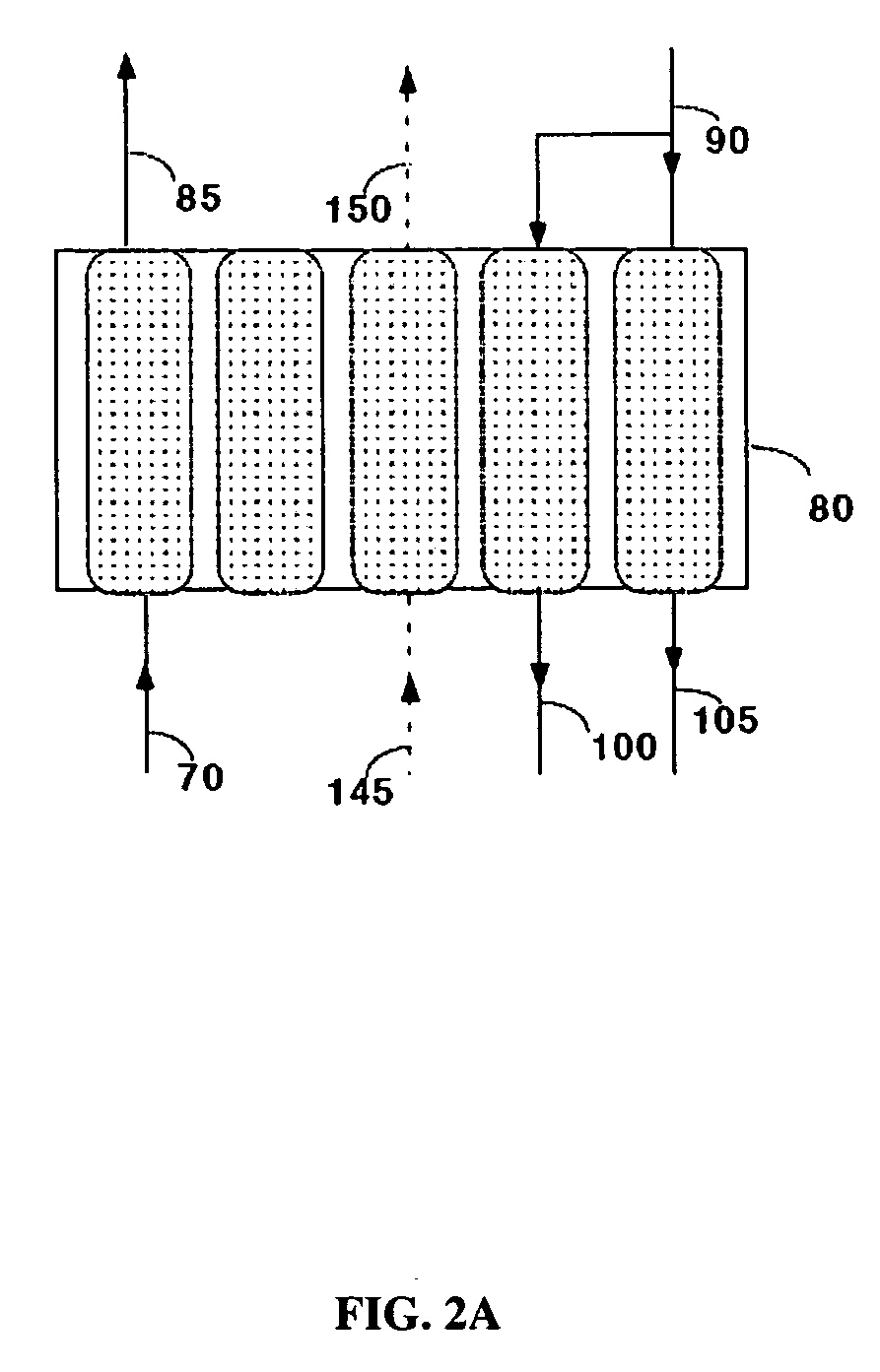Carbon Dioxide Recovery
a carbon dioxide and recovery technology, applied in the field of carbon dioxide recovery, can solve the problems of affecting the climatic conditions, unable to achieve the reduction of greenhouse gas emissions required to stabilize the greenhouse gas level, and inability to reduce the emission of greenhouse gases
- Summary
- Abstract
- Description
- Claims
- Application Information
AI Technical Summary
Problems solved by technology
Method used
Image
Examples
example 1
[0050]Commercially available 5A zeolite of 8×12 mesh size (about 1.5 mm) was obtained from Aldrich Corporation and loaded in two 18 mm diameter adsorbent beds. The total weight of adsorbent was about 500 grams (gms). A feed stream containing about 12.5% CO2 with the balance being nitrogen, to simulate flue gas from a coal-fired power plant, was passed through these beds at a flow rate of 11 standard liters / min and at a pressure of 1.34 bara. The standard conditions refer to 21.1° C. and 1 bara. The adsorbing bed was cooled with a jacket containing a water / glycol mixture at 30° C. The regenerating bed was heated with a jacket containing water / glycol mixture at 100° C. The concentrations in the CO2-depleted stream and in the CO2 product were analyzed using an infrared CO2 analyzer. The cycle for this process is shown in Table II. After heating, the beds were evacuated to a pressure of about 0.25 bara during the evacuation steps. For these process conditions, an average CO2 purity of 9...
example 2
[0051]The process of Example 1 was run at different adsorption temperatures. Other process conditions, namely the feed pressure, feed CO2 concentration, and the adsorbent material were the same as in Example 1. Again, the concentrations in the CO2-depleted stream and in the CO2 product stream were analyzed using an infrared CO2 analyzer. The process cycle of Table II was used. For a feed temperature of 20° C., an average CO2 purity of 99.0% and an average CO2 recovery of 88% were obtained. For a feed temperature of 40° C., an average CO2 purity of 99.2% and an average CO2 recovery of 84% were obtained.
example 3
[0052]The process of Example 1 was run with a commercially available 13X zeolite of 8×12 mesh size (1.5 mm) obtained from the Aldrich Corporation. The feed pressure, and the feed CO2 concentration were the same as in Example 1 and the process cycle of Table II was used. Again, the concentrations in the CO2-depleted stream and in the CO2 product stream were analyzed using an infrared CO2 analyzer. For a feed temperature of 20° C., an average CO2 purity of 98.5% and an average CO2 recovery of 87% were obtained. For a feed temperature of 30° C., an average CO2 purity of 98.5% and an average CO2 recovery of 78% were obtained.
PUM
 Login to View More
Login to View More Abstract
Description
Claims
Application Information
 Login to View More
Login to View More - R&D
- Intellectual Property
- Life Sciences
- Materials
- Tech Scout
- Unparalleled Data Quality
- Higher Quality Content
- 60% Fewer Hallucinations
Browse by: Latest US Patents, China's latest patents, Technical Efficacy Thesaurus, Application Domain, Technology Topic, Popular Technical Reports.
© 2025 PatSnap. All rights reserved.Legal|Privacy policy|Modern Slavery Act Transparency Statement|Sitemap|About US| Contact US: help@patsnap.com



